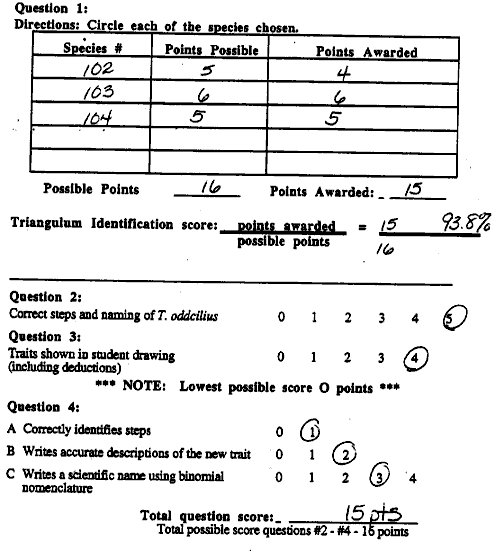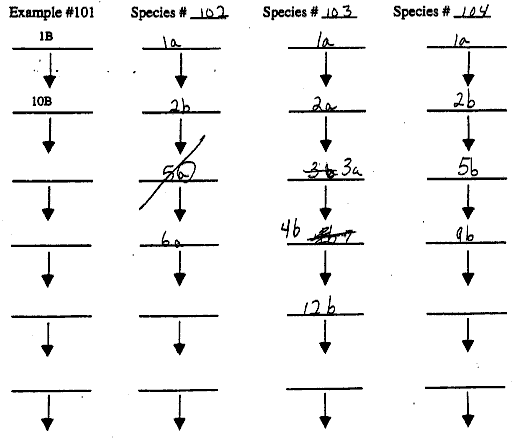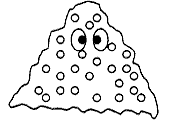Use the dichotomous key below to identify any three (3) species
of the genus Triangulum in the accompanying Species Sheet. Record
the choices made, and the resulting scientific name, on the answer
sheet provided.
| 1. |
A. |
Three (3) sided with straight lines |
|
Go to 2 |
| |
B. |
Three (3) sided with wavy lines |
|
Go to 10 |
| |
|
|
|
|
| 2. |
A. |
Has no eyes |
|
Go to 3 |
| |
B. |
Has eyes |
|
Go to 5 |
| |
|
|
|
|
| 3. |
A. |
Has flagella for movement |
|
Go to 4 |
| |
B. |
Has cilia for movement |
|
Go to 5 |
| |
|
|
|
|
| 4. |
A. |
The three sides are of equal length |
|
Triangulum equalius |
| |
B. |
The three sides are not of equal length |
|
Go to 12 |
| |
|
|
|
|
| 5. |
A. |
Has crossed eyes |
|
Go to 6 |
| |
B. |
Eyes not crossed |
|
Go to 9 |
| |
|
|
|
|
| 6. |
A. |
Has a single flagellum for movement |
|
Triangulum monoflagelleum |
| |
B. |
Has two or more flagellum for movement |
|
Triangulum polyflagelleum |
| |
|
|
|
|
| 7. |
A. |
Total number of cilia for movement are odd |
|
Triangulum oddcilius |
| |
B. |
Total number of cilia fo rmovement are even |
|
Go to 8 |
| |
|
|
|
|
| 8. |
A. |
Has a pointed nose |
|
Triangulum pointiatus |
| |
B. |
Has a rounded nose |
|
Triangulum roundiatus |
| |
|
|
|
|
| 9. |
A. |
Has two cilia on each side for movement |
|
Triangulum biciliatus |
| |
B. |
Has more than two cilia on each side |
|
Triangulum Polycilius |
| |
|
|
|
|
| 10. |
A. |
Has crossed-eyes |
|
Go to 11 |
| |
B. |
Eyes not crossed |
|
Triangulum waveus (samplest correctus) |
| |
|
|
|
|
| 11. |
A. |
Lower half of the body has a dot pattern |
|
Triangulum lowdotteus |
| |
B. |
Upper half of the body has a dot pattern |
|
Triangulum upperdotteus |
| |
|
|
|
|
| 12. |
A. |
Has a pointed nose |
|
Triangulum pointiflagelleum |
| |
B. |
Has a rounded nose |
|
Triangulum roundiflagelleum |












